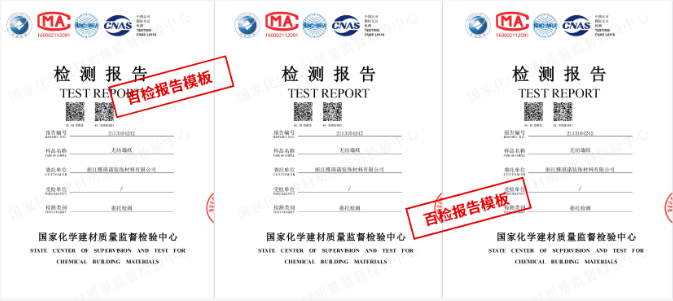
本文主要列举了关于糖果的相关检测方法,检测方法仅供参考,如果您想针对自己的样品定制试验方案,可以咨询我们。
1.High Performance Liquid Chromatography (HPLC): HPLC is a chromatographic technique used to separate, identify, and quantify components in a mixture. It is commonly used to analyze the composition of candies and detect any harmful additives or contaminants.
2.Gas Chromatography (GC): GC is another chromatographic technique that separates and analyzes compounds in a sample. It is useful for detecting volatile compounds in candies, such as flavor additives or chemical residues.
3.Mass Spectrometry (MS): MS is an analytical technique that ionizes chemical compounds and separates the ions based on their mass-to-charge ratio. It is often used in combination with chromatography for the analysis of candy ingredients and contaminants.
4.Polymerase Chain Reaction (PCR): PCR is a molecular biology method used to amplify and analyze DNA sequences. It can be employed to detect genetic modifications or pathogens in candies.
5.Inductively Coupled Plasma Mass Spectrometry (ICP-MS): ICP-MS is a sensitive technique for elemental analysis. It can be used to detect heavy metals or trace elements in candies that may pose health risks.
6.High-Performance Thin-Layer Chromatography (HPTLC): HPTLC is a chromatographic separation technique that is often used for the analysis of food additives, colorants, or contaminants in candies.
7.Ultraviolet-Visible (UV-Vis) Spectroscopy: UV-Vis spectroscopy is a technique that measures the absorption of ultraviolet and visible light by a substance. It can be utilized to determine the presence of certain compounds in candies.
8.Fourier Transform Infrared Spectroscopy (FTIR): FTIR spectroscopy is used to identify functional groups in molecules. It can be applied to characterize the composition of candy ingredients or detect any adulteration.
9.Atomic Absorption Spectroscopy (AAS): AAS is a technique for quantifying the concentration of metal elements in a sample. It can be used to test candies for metal contamination.
10.Capillary Electrophoresis (CE): CE is a separation technique based on the movement of charged particles in an electric field. It can be employed to analyze the composition of candies and detect various additives.
11.Scanning Electron Microscopy (SEM): SEM is a high-resolution imaging technique that can be used to examine the surface and structure of candies, helping to identify any foreign particles or contaminants.
12.Nuclear Magnetic Resonance (NMR) Spectroscopy: NMR spectroscopy is a powerful technique for determining the molecular structure of compounds. It can be used to analyze the ingredients in candies and detect any unexpected substances present.
13.Enzyme-Linked Immunosorbent Assay (ELISA): ELISA is a biochemical technique used for the detection of specific proteins or antibodies. It can be applied to check for allergens or contaminants in candies.
14.Flame Photometry: Flame photometry is a method for detecting metal ions based on the emission of characteristic wavelengths of light. It can be utilized to measure the concentration of specific metals in candies.
15.Proton Nuclear Magnetic Resonance Spectroscopy (1H-NMR): 1H-NMR is a form of NMR spectroscopy that specifically analyzes the hydrogen atoms in a sample. It is valuable for identifying compounds in candies.
16.Dynamic Light Scattering (DLS): DLS is a technique that measures the size distribution of particles in a sample by analyzing the fluctuations in light scattering. It can be used to assess the uniformity of ingredients in candies.
17.X-Ray Fluorescence Spectroscopy (XRF): XRF is a non-destructive analytical technique used for elemental analysis. It can identify and quantify the presence of various elements in candies.
18.Electron Spin Resonance (ESR) Spectroscopy: ESR spectroscopy is a method for studying materials with unpaired electrons. It can be utilized to detect certain types of radicals or free radicals in candy samples.
19.Ion Chromatography: Ion chromatography is a technique for separating and analyzing ions in a sample. It can be used to detect and quantify inorganic ions in candies.
20.Raman Spectroscopy: Raman spectroscopy is a technique that analyzes the scattering of light by molecules. It can be employed to identify the molecular composition of candies.
21.Thermal Gravimetric Analysis (TGA): TGA is a method for determining the composition of a substance based on its weight changes with temperature. It can be used to analyze the thermal stability of candy ingredients.
22.Differential Scanning Calorimetry (DSC): DSC is a thermal analysis technique used to study the phase transitions and thermal properties of materials. It can be applied to investigate the melting or crystallization behavior of candy components.
23.Microscopy (Light and Electron): Microscopy techniques, including light microscopy and electron microscopy, can be used to examine the physical characteristics of candies and detect any structural abnormalities or contaminants.
24.Colorimetry: Colorimetry is a method for quantifying the color properties of a sample. It can be employed to assess the color additives in candies or detect any color changes due to degradation.
25.Inductively Coupled Plasma Optical Emission Spectroscopy (ICP-OES): ICP-OES is a technique for elemental analysis based on the emission of light by excited atoms. It can be used to detect and quantify trace elements in candies.
26.Immunoassays: Immunoassays are analytical methods that rely on the specific interaction between antibodies and antigens. They can be used to detect allergens or contaminants in candies.
27.Viscometry: Viscometry is a method for measuring the viscosity of a liquid. It can be applied to evaluate the texture and consistency of candy products.
28.Fluorescence Spectroscopy: Fluorescence spectroscopy is a technique that analyzes the fluorescence emitted by a sample upon excitation by light. It can be used to detect certain compounds or contaminants in candies.
29.Conductivity Measurement: Conductivity measurement is a technique for determining the ability of a solution to conduct electric current. It can be employed to assess the ionic content of candies.
30.Particle Size Analysis: Particle size analysis methods, such as laser diffraction or sieving, can be used to characterize the size distribution of solid particles in candies.
31.Microbiological Testing: Microbiological testing involves the analysis of candy samples for the presence of microorganisms, such as bacteria, yeast, or mold, which may indicate contamination or spoilage.
32.Viscosity Measurement: Viscosity measurement is a technique for determining the resistance of a fluid to flow. It can be applied to assess the consistency and quality of candy products.
33.Flavor Profiling: Flavor profiling techniques, such as gas chromatography-mass spectrometry (GC-MS), can be used to analyze the volatile compounds responsible for the taste and aroma of candies.
34.Antioxidant Activity Assays: Antioxidant activity assays measure the ability of compounds in candies to inhibit oxidation. They can help assess the shelf life and quality of candy products.
35.Zeta Potential Measurement: Zeta potential measurement is used to determine the electrokinetic potential of particles in a solution. It can be applied to study the stability of candy suspensions.
36.Electrophoresis (Gel and Capillary): Electrophoresis techniques, such as gel electrophoresis and capillary electrophoresis, can be used to separate and analyze biomolecules or additives in candies.
37.Ultrafiltration: Ultrafiltration is a method for separating and concentrating molecules based on their size. It can be employed to purify and analyze candy ingredients.
38.Isotope Analysis: Isotope analysis can be used to determine the isotopic composition of elements in candies, providing information about their origin or authenticity.
39.Pyrolysis Gas Chromatography-Mass Spectrometry (Py-GC-MS): Py-GC-MS is a technique for analyzing the decomposition products of a sample. It can be used to study the thermal degradation of candy components.
40.Dye Penetration Test: The dye penetration test is a qualitative method for detecting defects or leaks in candy packaging by observing the penetration of a colored dye.
41.Volatile Organic Compound (VOC) Analysis: VOC analysis techniques can be used to detect and quantify the presence of volatile compounds in candies, which may affect their safety or quality.
42.Stability Testing: Stability testing involves subjecting candies to various conditions, such as temperature and humidity, to evaluate their shelf life and susceptibility to degradation.
43.Crystallization Analysis: Crystallization analysis techniques can be used to study the crystalline structure and behavior of sugar or other crystalline components in candies.
44.Chemiluminescence Analysis: Chemiluminescence analysis measures the light emitted during a chemical reaction. It can be applied to detect certain compounds or contaminants in candies.
45.Amylase Activity Assay: Amylase activity assays measure the activity of the enzyme amylase, which is involved in the breakdown of starch. They can be used to assess the quality of starch-based candies.
46.Humidity Analysis: Humidity analysis methods can be used to determine the moisture content of candies, which is critical for their quality, shelf life, and safety.
47.Organoleptic Testing: Organoleptic testing involves sensory evaluation by trained panelists to assess the taste, aroma, texture, and appearance of candies.
48.Accelerated Aging Studies: Accelerated aging studies simulate the effects of aging on candies under accelerated conditions, helping to predict their stability and quality over time.
49.Microscopy Imaging (Confocal and Atomic Force): Microscopy imaging techniques, including confocal microscopy and atomic force microscopy, can provide detailed images of the internal structure and surface properties of candies.
50.Immunoaffinity Chromatography: Immunoaffinity chromatography is a method for isolating and purifying specific compounds using antibodies. It can be applied to detect allergens or toxins in candies.
检测流程步骤

温馨提示:以上内容仅供参考使用,更多检测需求请咨询客服。


